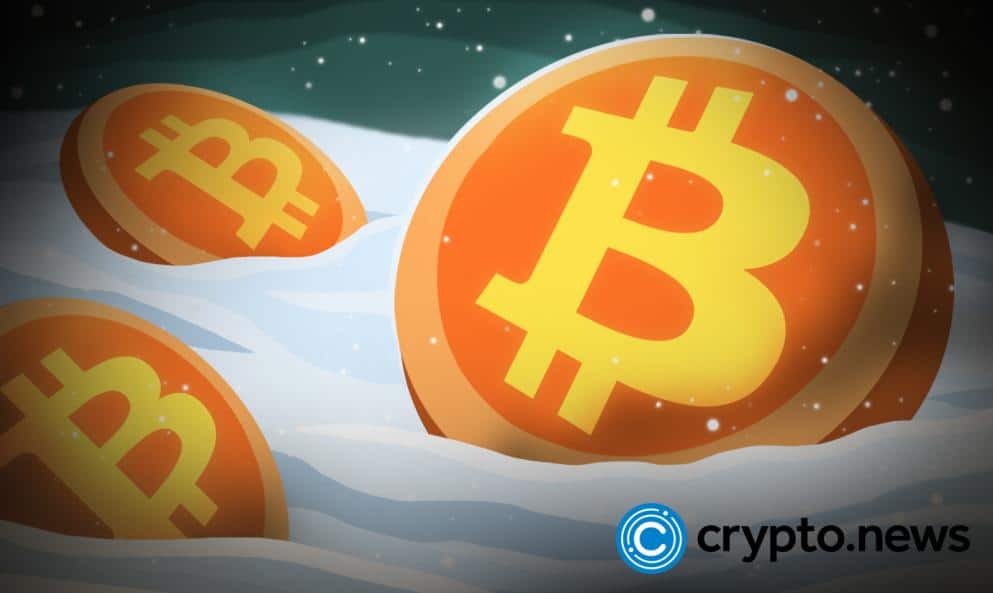Is Crypto Winter Coming? Three Things to Consider

In November 2021, the total market capitalization of the crypto space had hit 3 trillion USD, as per statistics from CoinGecko. Currently, the global crypto market cap is at $962.79B, representing more than a 60% drop in total value.
Table of Contents
A Wave of Digital Currency Price Drops
Bitcoin is not the only cryptocurrency bearing the branch of the crypto market plunge. Ethereum (ETH) and other leading altcoins, notably Cardano (ADA) and Polygon (MATIC), have all lost more than half of their values since the start of the crypto winter.
What’s more, major crypto exchanges, notably Coinbase and Gemini, have announced a freeze in hiring and layoffs starting from early June 2022. Shares of Coinbase have also fallen by close to 86%, with the company announcing plans to lay off 18% of its workforce owing to the reduced business.
As the crypto market turmoil continues, marked by steep price falls across the board, the term “crypto winter” is increasingly making rounds in the crypto space. Crypto winter was coined to describe a market period where prices plunge and stay low for weeks or months. Is crypto winter coming? Read on to learn more!
What Is Crypto Winter?
The phrase “crypto winter” was coined from the award-winning hit HBO series, “Game of Thrones.” In the popular TV show, “Winter is Coming” was the slogan of the House of Stark. The phrase was often mentioned to warn of enduring conflict that could befall the land of Westeros at any moment.
In the same analogy, “crypto winter” means that an extended period of the bear market could settle over the crypto markets at any time. Therefore, crypto traders should remain vigilant and be prepared for the chaos that could sweep the crypto space anytime, without much warning.
Figuratively, crypto winter refers to a period of prolonged bearish markets marked by price contraction that could remain low for up to two years. Unlike in a bearish market, in a crypto winter, the market is stagnant with minimal sideway movements. Investors lose interest in the markets thanks to flat or stunted ROIs. Investing in the crypto markets becomes a waiting game as investors have lost confidence in the state of the markets and would want to channel their investments elsewhere.
Is the Crypto Winter Coming? Three Things to Consider
There are growing signs that crypto winter is just around the corner. From the top five cryptocurrencies by market cap losing close to half of their market value since 2021 to leading crypto exchanges freezing hiring and laying-off workers, the crypto winter is around the corner.
Crypto markets soared significantly in late 2020 and early 2021 thanks to the US Federal Reserve pumping enormous amounts of money into markets in response to the COVID-19 pandemic, causing high liquidity in the financial markets. The high liquidity and increased investor interest fueled a major hyper-growth phase in the crypto markets that saw a rise in crypto market prices across the board.
The crypto markets started ailing in late 2021 when the liquidity was withdrawn from the markets, with the central banks tightening monetary policies across the globe. This was made worse by the rising interest rates, increased inflation, and the financial turmoil worldwide following Russia’s invasion of Ukraine. To know if crypto winter is around the corner, you’ll want to consider the three things discussed below:
- The 4-Year Cycle Rule
To most cryptocurrency enthusiasts, cryptocurrency tends to follow a mythical four-year cycle marked by an almost similar pattern of falling and rising prices every four years. While the cycle hasn’t been scientifically or statistically proven, many tie this theory to the quadrennial Bitcoin halving event where Bitcoin mining rewards are halved after every 210,000 blocks, usually four years. The last Bitcoin halving event occurred in 2021, when the block reward was cut by half from 12.5 to 6.25.
What’s most captivating about Bitcoin halving events is the repeated effects it seems to have on the crypto market roughly one year after each halving event occurs. In 2017, a year after the 2016 Bitcoin halving event where block rewards were halved from 25 to 12.5 BTC, Bitcoin and other cryptocurrencies hit all-time highs. In 2021, one year after the 2020 halving event, cryptocurrencies led by Bitcoin hit all-time highs.
What’s common about each halving event is that after a period of an intense market rally, the market begins to shake off as cryptos begin to plunge in value. In 2018, Bitcoin lost almost 80% of its value, with the crypto winter lasting close to 18 months.
Similarly, the last quarter of 2021 through to the 2nd quarter of 2021 saw cryptocurrency prices plunge after hitting all-time highs. Bitcoin has lost almost 70% of its value from November 2021 to August 2022, while Ethereum has lost 74% within the same period.
The crypto winter is due this year if the four-year crypto cycle continues. However, it’s important to consider the maturity of the crypto market in 2018 versus now. Also, the crypto space has greatly improved regarding regulations, educated investors, and more.
- Advancement of the Crypto Market
The crypto market has considerably changed since the last crypto winter in 2018. During the 2018 crypto winter, bitcoin hit an all-time high of $19,850 in December 2017 before tanking by almost 70% in just 51 days.
It’s almost 10 months since Bitcoin hit an all-time of $68,990 before losing close to 70% of its value. In the 2018 crypto winter, the crypto market cap fell by 66% compared to 48% in the past 10 months from the start of the crypto market plunge late last year.
The statistics show that there has been significant growth in the crypto markets from the last crypto winter. As such, it means that cryptocurrencies could still have to lose more points in an impending crypto winter. As things stand right now in the market, the market direction is mostly a bearish cycle rather than a crypto winter.
- Macroeconomics Factors Affecting the Crypto Markets
The crypto market is not the only market that has changed since the last crypto winter. Financial markets across the globe have also advanced significantly, with increased inflation exacerbated by the COVID-19 pandemic and the Russian invasion of Ukraine.
Inflation has reached record levels in most countries, with the US Federal Reserve expected to hike interest rates for the first time in three years to cater to the ballooning debt, which is currently at $28 trillion.
The crypto space has felt the brunt of the financial markets crisis. Besides, hostile regulations and laws set up by various countries, notably China, have significantly affected the crypto space. The financial market crisis and growing regulations have likely deterred institutional and retail crypto investors from frivolously investing in the space like before.
The ballooning cost of living, high-interest rates, and the financial markets crisis are some of the macroeconomic factors that have contributed to a considerable decline of the crypto markets that could pave the way for another crypto winter.
Final Thoughts
Several signs are pointing to another crypto winter in the offing. 2022 has been a difficult year for financial markets, the crypto market notwithstanding. Major cryptocurrencies have lost close to 70% of their values amidst a highly stagnant market that has pushed investors away.
However, most crypto experts, including Vitalik Buterin, believe that crypto winter isn’t bad. Crypto winters facilitate technological advancement in the crypto space, eliminate short-term speculations and weed out frivolous startups, presenting an opportunity for top companies to pursue more users and improve their products. Whether the crypto winter is upon us, time will tell!
Is investing in Cryptocurrencies profitable?
Cryptocurrency investment has always been considered risky due to price volatility, which makes it difficult for traders to predict future prices. The crypto market is currently experiencing a massive bull run, with cryptocurrencies like Ethereum rising from $20 to $1,000 per coin in less than 12 months. However, cryptocurrency investment is still highly speculative due to high trading fees, regulatory uncertainty, and lack of liquidity.
Should I invest in Bitcoin?
Investing in Bitcoin is one of the best investments you can make today. As it has before, the price can rally at any given time, although the overall crypto market is currently bearish. However, investing in Bitcoin can be risky, which means you need to know what risks you are taking. Some risks include volatility, scams, hacking attacks, government regulations, etc…
Where can I buy Cryptocurrencies?
Many exchanges are available where you can trade cryptocurrencies, such as Binance, Kraken, Coinbase, Bitstamp, Gemini, etc. If you want to invest in Bitcoin, Ethereum, Ripple, Litecoin, Dash, Monero, EOS, Stellar Lumens, NEO, Zcash, or other cryptocurrencies, then you need to find one exchange that works for you.















